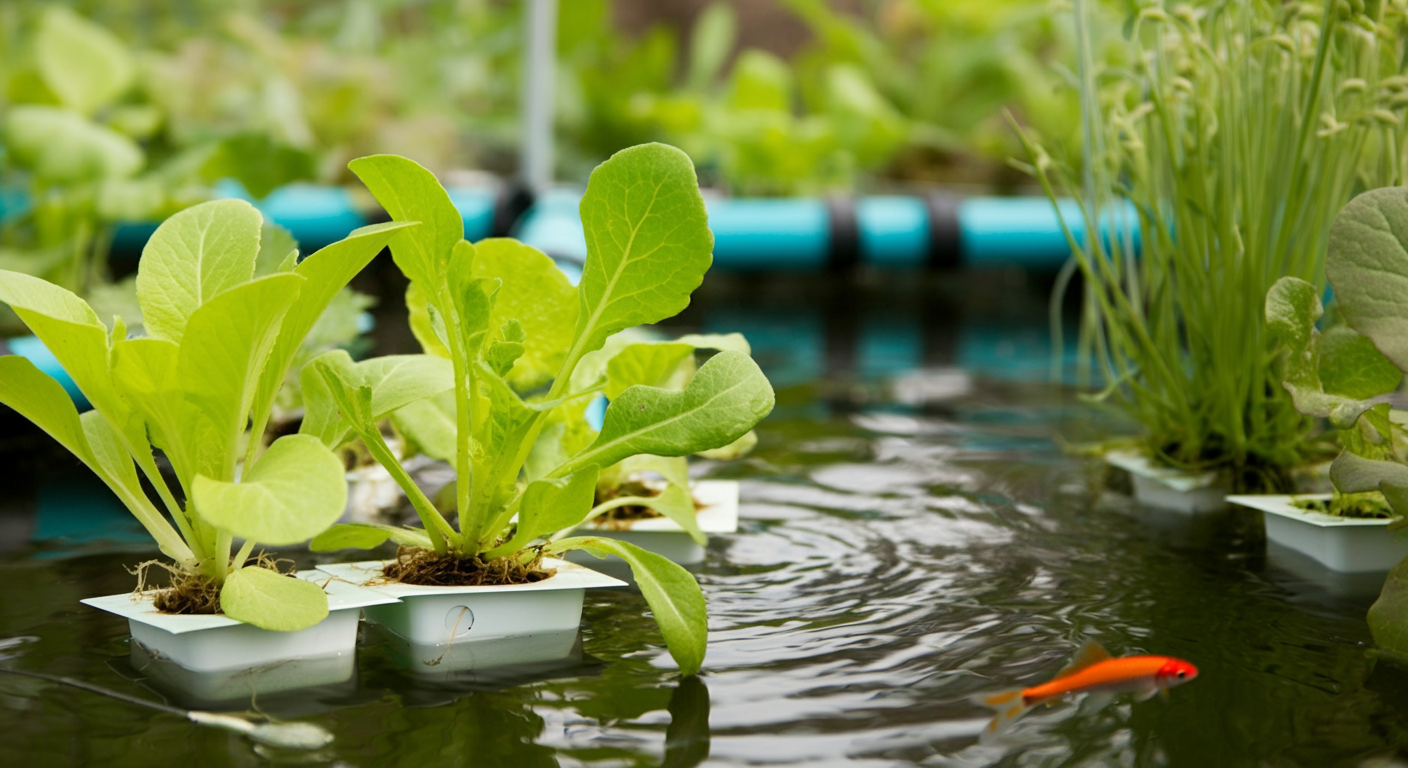How Aquaponics Combines Fish and Plant Farming
In the search for sustainable and efficient farming methods, aquaponics has emerged as a harmonious solution that brings together fish and plant cultivation. This closed-loop system mimics natural ecosystems, creating a balanced environment where both fish and plants thrive together. If you’ve ever wondered how these two forms of farming can work in tandem, let’s explore the gentle synergy of aquaponics.

The Basics of Aquaponics
At its core, aquaponics is a blend of aquaculture (raising fish) and hydroponics (growing plants without soil). Instead of relying on external fertilizers, the system uses fish waste to nourish plants, while the plants, in turn, filter and clean the water for the fish. It’s a self-sustaining cycle that reduces waste and maximizes efficiency.
How It Works
- Fish Produce Waste – Fish naturally release ammonia through their waste and respiration. In a traditional aquaculture setup, this waste would build up and require frequent water changes.
- Bacteria Convert Waste – Beneficial bacteria break down ammonia into nitrites and then nitrates, which are much less harmful to fish and serve as excellent plant nutrients.
- Plants Filter the Water – The nutrient-rich water is circulated to plant beds, where the roots absorb the nitrates, effectively purifying the water before it returns to the fish tank.
- Clean Water Returns to Fish – The now-filtered water flows back into the fish tank, completing the cycle.
Benefits of Aquaponics
1. Water Efficiency
Aquaponics uses up to 90% less water than traditional soil farming because water is continuously recycled rather than lost through runoff or evaporation.
2. No Chemical Fertilizers Needed
Since fish waste provides all the necessary nutrients, there’s no need for synthetic fertilizers, making it an organic and eco-friendly growing method.
3. Faster Plant Growth
Plants in aquaponic systems often grow faster than those in soil because they have constant access to nutrients and oxygen-rich water.
4. Dual Harvest: Fish and Plants
Instead of maintaining separate systems for fish and crops, aquaponics allows farmers to harvest both protein (fish) and vegetables from the same setup.
5. Space-Saving and Scalable
Whether in a backyard, greenhouse, or urban rooftop, aquaponics can be adapted to fit small or large spaces, making it accessible for home gardeners and commercial farmers alike.
Getting Started with Aquaponics
If you’re interested in trying aquaponics, here are a few simple steps to begin:
- Choose Your Fish – Tilapia, trout, and catfish are popular choices, but even goldfish or koi can work for smaller systems.
- Select Your Plants – Leafy greens like lettuce, kale, and herbs grow well, but tomatoes, peppers, and strawberries can also thrive.
- Set Up the System – You’ll need a fish tank, a grow bed, a water pump, and tubing to circulate water.
- Monitor Water Quality – Regularly check pH, ammonia, nitrite, and nitrate levels to ensure a healthy balance for both fish and plants.
A Gentle Approach to Sustainable Farming
Aquaponics is more than just a farming technique—it’s a reminder of how nature operates in cycles of mutual support. By combining fish and plant farming, we create a system that is not only efficient but also peaceful and regenerative. Whether you’re a gardener looking to reduce waste or simply curious about sustainable food production, aquaponics offers a calm and rewarding way to grow.
Would you try an aquaponics system at home? Share your thoughts in the comments below!